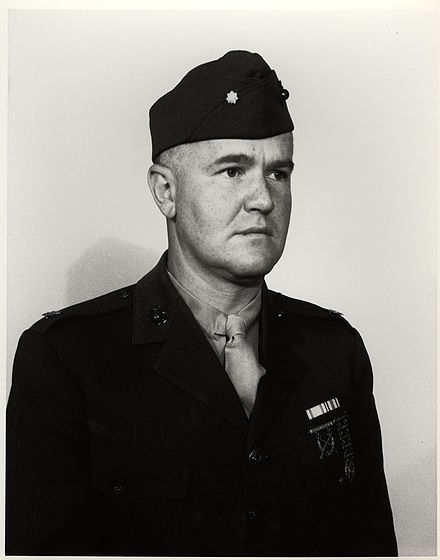(Editor’s note: A release by the Augusta Museum of History states “After lengthy discussions, the Augusta Museum of History has concluded that given the uptick in the Omicron variant, it is in the best interest of our 2022 recipients and the Symposium that we present the 2022 Jimmie Dyess Symposium virtually and it will not be an in-person event. The Symposium will be recorded and available via our Facebook page and YouTube Channel.”)
Augusta native Marine Corps Lt. Col. Jimmie Dyess is the only person in the United States to receive the country’s two highest honors, the civilian Carnegie Medal for heroism and the United States Medal of Honor.
Dyess also has the highway leading to Gate One of Fort Gordon named in his honor, and once had a navy destroyer ship, USS Dyess, named for him. The ship served from 1945 to 1981, according to the U.S. Navy Destroyer Archive.
[adrotate banner=”15″]
Dyess would not live to see any of his military honors, however, because he was killed in battle on the Pacific Island of Namur on Feb. 2, 1944.
Born in 1909, Dyess showed himself to be a leader and a hero at a young age. He achieved the rank of Eagle Scout, and while visiting the beach in South Carolina at age 19, he spotted two women being swept away in heavy surf and dove in after them.

Both women were saved, and Dyess’ selfless actions won him the Carnegie Medal.
According to the Department of Defense, Dyess didn’t necessarily set out to become a soldier. While attending Clemson University, an injury sidelined his prospects for a football career, so instead, he joined the ROTC where his marksmanship was immediately apparent.
After college, Dyess joined the Army reserves and later switched to the Marine Corp reserves.
Dyess decided to move over to the Marine Corps was because the job paid a little better, and Dyess also got a chance to further improve his marksmanship, according to his son-in-law retired Air Force Maj. Gen. Perry Smith. Smith wrote the definitive book on Dyess’ military career, Courage, Compassion, Marine: The Unique Story of Jimmie Dyess.
“I think he made around $25 a week, which was a lot of money in the Depression, but also, he was an All-American marksman, and the Marines had a rifle team that were national champs for years,” Smith said.
In the early 1930s, hardly anyone in America saw war on the horizon, even though the Nazi party had come to power in Germany, and Japan was rising as a belligerent imperialist force, Smith notes.
However, Dyess was ready for anything. He continued to rise in rank with the Marine Corps Reserves while managing the Augusta Lumber Company and running a local camp for the Boy Scouts, according to the Department of Defense.
Dyess would heed the call of his nation in 1940 and go into active duty after it became clear that America should prepare for the worst. When Imperial Japan led the surprise attack on Pearl Harbor on Dec. 7, 1941, the United States declared war on Japan and, in turn, Adolf Hitler declared war on the United States.
[adrotate banner=”55″]
After years of intense combat in America’s campaign against the Japanese, Dyess, nicknamed “Big Red” by his troops, was promoted to the rank of lieutenant colonel and, by 1944, was in command of the 1st Battalion, 24th Marines, 4th Marines Division. He commanded those units during the battle over the Marshall Islands, according to the Department of Defense.
The day before his death, during fierce fighting over Kwajalein atoll in the south to Roi-Namur island, Dyess discovered that several of his Marines were stranded behind enemy lines. Dyess led a rescue party himself, breaking through the front to rescue his men.
According to his Medal of Honor citation, Dyess was “constantly at the head of advance units, inspiring his men to push forward until the Japanese had been driven back to a small center of resistance and victory assured.”
On Feb. 2, 1944, just one day after his heroic rescue mission, Dyess stood on top of an anti-tank trench to direct fire against what remained of the Japanese forces. Victory was clearly in his grasp. However, standing on that embankment, he became the target of enemy fire and was killed instantly by a blast of machine gun fire.
According to Smith, Dyess was criticized for placing himself in such peril, as it was Marine doctrine at the time for commanding officers to direct troop movements far behind the front line.
“You have to remember that Dyess was an All-American marksman, he was a world class marksman and he had a bunch of marines who had never been to combat, really didn’t know what the hell they were doing, and he felt they needed help in directing fire and dealing with an enemy that was shooting at them,” Smith said.
Dyess never got to see the America that emerged after World War II; however, his name will never be forgotten, at least not in Augusta.
…And that is something you might not have known.
Scott Hudson is the Senior Reporter for The Augusta Press. Reach him at scott@theaugustapress.com











